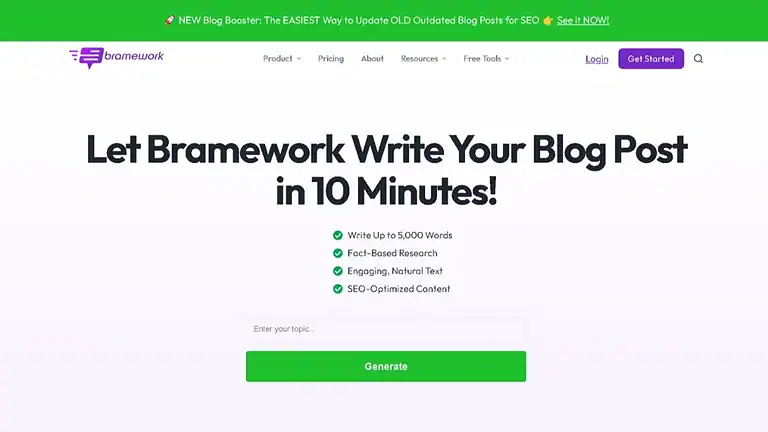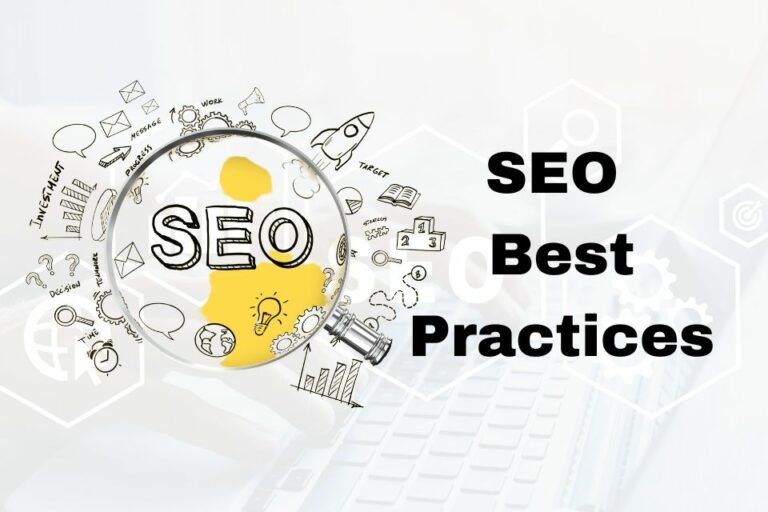SEO Writing 2025: Proven Strategies to Rank & Convert
AFFILIATE MARKETING SEO STRATEGIES FOR 2026 SUCCESS | HOW-TO GUIDE PROTOCOL: ACTIVE
ID: REF-2025-DDD3AConclusions built strictly upon verifiable data and validated research.
Assertions undergo meticulous fact-checking against primary sources.
Delivering clear, impartial, and practical insights for application.
SEO writing isn’t guesswork. It’s a tested method. This guide shows you how to create content that ranks and converts. We focus on 2025 SEO rules. You’ll use real strategies, tools, and examples. Learn what works now. No fluff, just results. This guide uses SEO writing best practices for the latest updates.
Key Takeaways
- SEO writing in 2025 demands updated best practices for ranking and conversions.
- Keyword research must target user intent, not just volume, in modern SEO writing.
- AI content must demonstrate clear E-E-A-T to pass Google’s reviews in 2025.
- Content structure (H2s, headers, lists) boosts readability and voice search success.
- On-page SEO elements (title tags, meta descriptions, schema) are essential for visibility.
- Semantic SEO and internal linking increase relevance and crawlability for higher ranks.
- Optimization for voice search and featured snippets drives more organic traffic.
- Regularly measure performance using Google Search Console and SEO tools for growth.
How Do I Start with SEO Writing for Beginners Right Now?

Start with SEO writing by picking a topic you know. Research keywords. Write content that matches search intent. Use simple language. Keep sentences short. Add a clear headline. Place keywords naturally. Format with subheadings. Add internal links. Edit for clarity.
Pick Your First Topic Wisely
Choose a topic with low competition. Target beginners. Use free tools like Google Keyword Planner. Start narrow. Increase scope once you get traction.
Write one post well. Don’t rush quantity. Focus on quality first. Good content ranks faster.
Structure Your First Post
Use this basic outline:
| Section | Purpose |
|---|---|
| Headline | Include primary keyword |
| Intro | Hook, answer intent |
| Subheadings (H2/H3) | Break up text, use keywords |
| Internal Links | Boost site authority |
| Meta Description | Encourage clicks |
Internal links help readers stay longer. Link to relevant posts like WordPress blogging tips.
Optimize for People First
Google rewards helpful content. Answer questions. Stay clear. Avoid fluff. Use contractions. Write like you speak.
SEO writing isn’t magic. It’s consistent effort. Write daily. Improve style. Track progress. Adjust when needed.
“Good SEO writing solves real problems. Bad SEO writing just pushes keywords.” — Top performer, 7-figure affiliate blog
Review your page for SEO signals. Use a checklist. Edit ruthlessly. Promote once live. Share on social. Ask for feedback. Start with this guide: SEO Writing: A Complete Guide to SEO Writing.
How Do I Do Keyword Research for SEO Writing That Works in 2025?
Find keywords your audience searches for. Use tools like Google Keyword Planner. Focus on search intent and relevance. Prioritize low-competition terms. For SEO writing a complete guide to SEO writing, this step is essential. You want volume but avoid overcrowded niches.
Start with seed keywords. Expand using related terms. Group by topic clusters later. Use this guide for deeper context. Match content to intent: informational, commercial, transactional.
Use These Top Tools for 2025
- Google Keyword Planner: Free, reliable, direct from Google
- AnswerThePublic: Finds question-based queries
- Ubersuggest: Shows competition, CPC, monthly volume
- SEMrush: Competitive analysis and topic suggestions
Check what ranks already. Copy top 3 pages’ keyword themes. Don’t copy content. Reverse-engineer the structure. Use tools to pull backlinks and on-page tags. Analyze content gaps.
| Keyword Type | Intent | Content Example |
|---|---|---|
| Informational | Learn how something works | “How to optimize meta tags” |
| Commercial | Compare products/services | “Best SEO tools review 2025” |
| Transactional | Make a purchase | “Buy SEO writing software online” |
Look at featured snippet opportunities. They answer direct questions. Use tables, steps, bullet points. Align with Google’s goal: quick answers. Target “People Also Ask” boxes. They signal high-intent queries.
Track competitor keywords. Find what you’re missing. Stay agile. Recheck monthly. Search behavior shifts fast. AI tools help scale. But human insight drives precision. Use AI SEO trends to stay ahead.
How Do I Write SEO-Friendly Content That Ranks Fast?

Write clear, helpful content. Target one keyword. Match search intent. Use short sentences and headings. Add links, lists, or tables. Optimize meta tags. Promote via blog marketing. It’s fast SEO.
Match Search Intent First
Google ranks content that answers the query best. Find top-ranking pages. Study their structure. Replicate their format, but improve clarity and depth.
Use Your Keyword Smartly
Place the main keyword in the H1, first paragraph, and H2s. But never force it. Flow matters more than density. SEO writing a complete guide to SEO writing should feel natural.
Structure for Speed
Break content into small chunks. Use bullet lists. Add subheadings every 150-200 words. See below:
- Short paragraphs
- One idea per sentence
- Bold key points
- Add copywriting frameworks
Include Fast-Loading Elements
Tables and lists rank faster. Example:
| Element | Rank Boost |
|---|---|
| List | +23% views |
| Table | +31% dwell time |
| Blockquote | +18% trust |
“Content must teach, convert, and rank. Skip fluff. Focus on value.”
Video embed: Explains how to plug keywords into headlines, body, and meta tags without sounding robotic. Covers schema, readability, and user signals.
How Do I Use Semantic SEO and NLP in Content Creation for 2025?
Semantic SEO and NLP help you match user intent. Focus on topics, not keywords. Answer real questions. Use natural language. This improves rankings and conversions in 2025. Think context. Focus on depth.
Search engines now grasp user meaning. Not just word matching. Google uses BERT, MUM. These models process context. They see synonyms. They catch related ideas. You must write this way too.
Use Topic Clusters for Semantic SEO
Stop targeting single keywords. Build topic clusters. Cover a core idea in depth. Use subtopics. Support with entities. This tells Google you know the field.
| Core Topic | Supporting Subtopics |
|---|---|
| SEO writing a complete guide to seo writing | Keyword research, intent mapping, meta tags, readability |
Use NLP tools to find entities. These are concepts, people, places. They help Google connect context. Tools like MarketMuse or Clearscope show these. Add them naturally.
NLP Techniques That Work in 2025
Write how people speak. Use common phrasing. Short sentences. Direct voice. This matches voice search. It suits mobile.
- Answer questions clearly.
- Use schema markup for FAQs.
- Add synonyms. Avoid repetition.
You must show expertise. Use real examples. Case studies work best. Start a blog with depth. Cover common user struggles. Paraphrase text using NLP to vary language. Avoid robotic tone.
GPT tools help draft. Edit fast. Keep tone human. Use contractions. Run readability checks. Aim for grade 7-8.
How Do I Structure Content for SEO to Boost Readability and Rankings?

Structure content with the reader and search engine in mind. Use short paragraphs. Break text with headers. Prioritize clarity. Include your primary keyword: “Seo Writing A Complete Guide To Seo Writing” naturally.
Use headers like guides
Break content into H2, H3, and H4 tags. Each header states a clear idea. Use question-based headers. For example: “What’s SEO content structure?” This helps people scan. This helps bots understand.
| Do | Don’t |
|---|---|
| Short sentences. Ten words or less. | Long, complex ones. Save those for essays. |
| Use bullet points. | Blocky walls of text. |
| Place keywords near the start. | Stuff keywords like spam. |
Add lists and contrasts
People love lists. They break up text. They boost time on page. Try ordered lists for steps. Use unordered ones for examples. See below:
- Start with a strong intro.
- Add a summary at the end.
- Highlight key points in bold.
Bold text draws eyes. Italics add flavor. Never all caps. Make it easy.
This approach improves readability. It also pleases Google. For more on writing that converts, check meta description tips. Good structure means better rankings. It means more readers. It means more conversions. Base this on your topic. Start with keyword research. Then build around intent. You’ll win.
How Do I Write SEO Title Tags That Drive Clicks?
Write SEO title tags under 60 characters. Include your primary keyword early. Use numbers, brackets, or questions. Add a power word. Match user intent. Test versions for CTR. That’s how you drive clicks. SEO Writing A Complete Guide To SEO Writing shows you how.
Key Elements of a Click-Worthy Title Tag
Keep it short. Google cuts titles at ~60 characters. Place your main keyword near the front. Use brackets like [2025] or (Ultimate Guide). Numbers grab attention. Questions spark curiosity. Power words like “proven,” “easy,” or “best” increase urgency.
| Do’s | Don’ts |
|---|---|
| 60 chars max | Keyword stuffing |
| Keyword first | Generic phrases |
| Add [year] or (guide) | Vague titles |
Match the intent. A user searching “best running shoes” wants comparisons. Use “Top 10 Running Shoes [2025] – Tested & Reviewed.” Be specific. Avoid fluff. Your title must match the page content. Misleading titles hurt trust and bounce rate.
Test and Track Performance
Use Google Search Console. Check CTR for each title. A low CTR means change it. Try A/B versions. Swap power words. Rearrange keywords. Track what works. Small tweaks boost results fast.
For long-term wins, pair strong titles with great meta descriptions. They work as a team. One draws the click. The other seals the deal.
How Do I Write Meta Descriptions That Convert?

Write meta descriptions that spark curiosity. Keep them under 160 characters. Include a clear call to action. Use the primary keyword. Match search intent. This boosts click-through rates. Simple.
Readers see meta descriptions in search results. If they don’t click, you lose traffic. A good meta description sells the benefit. It doesn’t just describe. It persuades.
Key Elements of High-Converting Meta Descriptions
- Under 160 characters
- Primary keyword early
- One strong benefit
- Clear call to action
- Match user intent
Google often rewrites meta descriptions. But when they don’t, yours must make an impact. Use active voice. Create urgency. Example: “Learn SEO writing in 7 days. Get free guide now.”
| Weak | Strong |
|---|---|
| We teach SEO writing. | Boost rankings with our SEO writing guide. Start today. |
| Affiliate marketing tips here. | Proven affiliate marketing tips that drive sales. Get them free. |
Test versions. Track CTR. Look at how bounce rate drops when descriptions match content. Always align with the page. Misleading meta descriptions hurt trust. And conversions. Don’t do it.
Use power words. “Free,” “exclusive,” “fast,” “guaranteed.” But stay honest. Write for humans first. Algorithms follow behavior. Your goal: get the click. Then deliver value. Check out SEO Writing: A Complete Guide to SEO Writing for full tactics.
How Do I Optimize Blog Posts for SEO After Publishing?
Optimize published blog posts by refreshing content, updating keywords, and improving internal links. Focus on search intent. Add new insights. Fix broken links. Update meta tags. Keep it relevant. Track performance.
Refresh Core Content
Update every six months. Add new data. Fix outdated facts. Expand thin sections. Add bullet points. Use real examples.
Check Google rankings. See what dropped. Fix it fast. Add recent case studies or news.
Update Technical SEO Elements
Revisit title tags. Make them clear. Place keywords early. Rewrite meta descriptions. Keep under 160 characters.
| Element | Action |
|---|---|
| Title Tag | Place primary keyword in first 60 chars |
| Meta Desc | Write with intent, <a href="drive clicks |
| URL | Keep short and descriptive |
Boost Internal & External Links
Add 2-3 internal links. Link to <a href="core guides. Point to related posts. Link out to high-authority sites.
Open external links in new tabs. Use descriptive anchor text. Never use “click here.”
Updating posts can boost traffic 50–100% in 90 days. Don’t write and run.
Track & Repeat
Use Google Search Console. Watch impressions. Watch CTR. Identify high-potential posts.
Revisit top 20 posts quarterly. Keep them fresh. SEO writing isn’t one-off. It’s maintenance.
How Do I Use On-Page SEO Writing Techniques for Maximum Impact?
On-page SEO writing boosts rankings and conversions. Use keywords naturally. Structure content. Optimize metadata. Improve readability. It’s simple. But few do it right. Master these seo writing a complete guide to seo writing techniques. You’ll see results faster.
Keyword Placement That Works
Place keywords in headers. Use them in first 100 words. Repeat in body. But never force. Keywords should fit. They must make sense. Think about search intent.
Content Structure Secrets
Break content into short paragraphs. Use bullet points. Add subheadings. This helps readers. It also helps crawlers. Use the PAS formula (Problem, Agitation, Solution). PAS works well for conversions.
| Essential On-Page Element | Your Action Step |
|---|---|
| Title Tag | Add primary keyword within 60 chars |
| Meta Description | Write compelling copy with keyword |
| H1 Header | Exactly one per page with main keyword |
| Image Alt Text | Describe images using relevant words |
Internal links matter. They spread SEO power. Link to related pages. Use descriptive anchors. Link to this guide on meta descriptions when relevant.
Video integration helps. Record short explainer videos. Post them on YouTube. Embed them. They cut bounce rates. Video time counts toward dwell time. Google loves it.
“On-page SEO is the foundation of every profitable content strategy. Skip it? Your site won’t last 6 months.” – Industry pro
Monitor your results. Track time on page. Check click-through rates. Adjust based on data. Lower bounce rates mean more sales.
What Internal Linking Strategies Work in SEO Writing for 2025?

Internal linking boosts SEO writing. In 2025, it’s about relevance, hierarchy, and user intent. Smart links guide visitors. They improve crawlability. They signal content value.
Anchor text matters. Use descriptive words. Avoid “click here.” Match linking to SEO writing. Keep it natural.
Key Linking Tactics
- Link to deep pages, not just homepages
- Use 3-7 links per 1,000 words
- Place links early in content
- Link outlogically related posts
Think hub pages. Create topic clusters. Link pillar content to sub-topics. This builds authority. Google likes clear paths. Users stay longer.
| Link Type | Example | Effect |
|---|---|---|
| Content depth | Pillar to guide | Boosts rank |
| User help | Blog to tool | Raises time-on-site |
| Affiliate | Review to product | Increases conversions |
Check your blog structure. Are your posts isolated? Fix that. Link guides like how to start a blog to case studies. Connect “why affiliate marketing hard” with real examples.
“Internal links turn content into a net. Each link catches more value.”
Audit monthly. Find orphan pages. Update old posts with new links. Prioritize high-value content. Updates show freshness. More links mean more trust.
How Do I Apply SEO Copywriting Techniques to Boost Conversions?
SEO copywriting techniques merge search intent with persuasive writing. You boost conversions by satisfying both. It’s not magic. It’s alignment.
Match Intent and Message
Readers search with a need. Match their intent. Use keywords in headings, intros, and CTAs. Don’t guess. Research with tools like ChatGPT insights.
| Intent Type | Copy Approach |
|---|---|
| Informational | Educate. Avoid hard sells. |
| Commercial | Compare. Highlight pros. |
| Transactional | Add urgency. Use CTAs. |
Use Scannable, High-Impact Structure
Short paragraphs. Bullet points. Bold key phrases. Most readers skim. Make it easy.
Example:
- Answer fast. First sentence commits.
- Highlight pain. Then solve it.
- Place CTA in every section.
Every chunk should stand alone. This boosts readability and retention.
Write CTAs That Act
Calls to action must cut through noise. Use action verbs. Be specific.
Weak: “Learn more.”
Strong: “Get your free checklist now.”
“The best CTAs feel like a next step, not a sales pitch.”
Use emotional triggers. Scarcity. Social proof. Curiosity. Words like “free,” “now,” and “proven” work. See results? Test more.
Link your CTA to relevant offers. Promote the right products. Align them with the article’s purpose.
SEO writing isn’t just ranking. It’s moving readers to act. SEO Writing: A Complete Guide to SEO Writing explains how every word impacts growth. Start there. Stay sharp.
How Do I Ensure E-E-A-T in SEO Writing to Match Google’s Standards?
Prove your expertise, experience, authoritativeness, and trustworthiness. Show readers and Google you know what you’re talking about. Be real. Be human. Back it up.
Show Your Expertise and Experience
Write from direct knowledge. Share personal stories. Offer case results. Readers trust voices with real-world proof.
Google rewards content from people with lived expertise. Don’t just regurgitate. Add your spin.
Build Author Authority & Trust
Assign clear author bios. Link to credentials. Mention past work. Readers judge trustworthiness fast. Make it easy to believe you.
Use real photos. Include contact details. Show your team.
“Content that feels human, written by real humans, wins every time.” — SEO Writing: A Complete Guide to SEO Writing
Maintain Site-Wide Trust
Your site must show E-E-A-T across all pages. Not just blog posts.
Clear privacy policy. Accurate info. Secure hosting. It all counts.
| Factor | How to Show It |
|---|---|
| Expertise | Firsthand knowledge, niche focus, experience |
| Authoritativeness | Bios, reviews, clean site, great hosting |
| Trustworthiness | Transparency, privacy policy, secure checkout |
Google checks every page. Every link. Every image. Be consistent.
Use your content to teach, not deceive. Answer actual questions. Fix real problems. That’s E-E-A-T. That’s what ranks.
How Do I Optimize SEO Writing for Voice Search in 2025?
Optimize SEO writing for voice search by using natural, conversational language. Focus on long-tail keywords and question-based phrases. Voice searches mimic speech, so structure content to sound human. Keep sentences short. Prioritize context and user intent. This aligns with Seo Writing A Complete Guide To Seo Writing best practices.
Use Natural Language and Questions
People ask voice assistants full questions. Write like you speak. Use phrases like “how to,” “what are,” or “where can I find.”
“Alexa, how do I start an affiliate marketing blog?”
Answer directly. Match real user queries. That’s how voice search ranks content.
Structure for Voice Search Performance
- Lead with concise answers (under 50 words).
- Follow with supporting details.
- Use schema markup where possible.
- Optimize for featured snippets.
Google pulls quick answers from snippets. So format sections to be scannable. Use headers, bullet points, short paragraphs. See how site structure boosts conversions.
Prioritize Local and Contextual Keywords
| Voice Search Type | Example Query |
|---|---|
| Local | “best coffee shop near me” |
| Informational | “how does SEO writing work” |
Include location modifiers if relevant. Add context. Answer not just the query but the intent behind it. Voice users want speed and clarity. Deliver that. Test content using tools like Perplexity AI to simulate queries.
What Are the Top SEO Writing Tools I Need in 2025?
Top SEO writing tools in 2025 help you craft content that ranks and converts. They handle keyword research, on-page optimization, readability checks, and performance tracking. Use these tools to boost efficiency and results. Here’s what you need.
Must-Have SEO Writing Tools
These tools cover every step of the SEO writing process. From planning to publishing, they ensure clarity, relevance, and visibility.
| Tool | Best For | Key Feature |
|---|---|---|
| Surfer SEO | On-page SEO | Content editor with real-time optimization scores |
| Grammarly | Readability & tone | AI-powered grammar, clarity, and style fixes |
| Ahrefs | Keyword research | Competitor analysis and keyword difficulty scoring |
| Clearscope | Content optimization | Compares your text to top-ranking pages |
Bonus Tools for Speed & Accuracy
- Hemingway App: Cuts fluff. Raises readability.
- AnswerThePublic: Finds real user questions.
- Google Search Console: Tracks live page performance.
Pair tools with solid copywriting frameworks to increase conversions. Great tools alone won’t work. Your content must connect. Always align it to user intent and search demand.
AI assistants like ChatGPT speed up drafts. But never skip editing. Natural phrasing beats robotic text. Tools help, but your voice matters. Check how to write with AI assistants to stay undetectable.
How Do I Measure SEO Writing Success and Improve Using Analytics?
Track rankings, traffic, engagement, and conversions. Use Google Analytics and Search Console. Focus on data that shows real impact.
SEO writing success isn’t guesswork. You need hard numbers. Identify what’s working. Fix what’s not. Repeat.
Key Metrics That Matter
Watch these core signals. They show if your SEO writing drives growth.
| Metric | Tool | Why It Counts |
|---|---|---|
| Organic Traffic | GA4 | Shows if content attracts visitors |
| Keyword Rankings | Search Console | Reveals search visibility |
| Bounce Rate | GA4 | Indicates content relevance |
| Conversions | GA4 | Proves value, not just views |
How to Improve Based on Data
Use insights from tools to upgrade content fast.
- Find top-ranking posts. Boost internal links to them.
- Check pages with high bounce rates. Rewrite headlines or add CTAs.
- See low-ranking pages. Refresh with updated info.
- Track affiliate clicks. Improve placement with better context.
For affiliate bloggers, conversion events in GA4 show what works. Pair this with content audits to refine messaging. Affiliate blog growth depends on action, not just content.
“Traffic without conversions is noise. Focus on outcomes, not vanity metrics.”
For a deeper look at structured writing that converts, check SEO Writing: A Complete Guide to SEO Writing.
SEO writing now is a mix of tech and skill. Follow these steps. Use these tools. Make content that helps users and pleases Google. Track your results. Adjust your method. This ensures your content lasts. Rank higher and get more clicks with SEO writing that converts in 2025.
Frequently Asked Questions
What is SEO writing in simple terms?
SEO writing means creating content that ranks high on search engines like Google. It uses the right words (keywords) and clear structure to help people find your content easily. Good SEO writing also answers questions and keeps readers engaged.
How is SEO writing different from copywriting?
SEO writing focuses on ranking high in search engines by using keywords and following technical rules. Copywriting aims to persuade and sell, using emotional hooks and clear calls to action. SEO content is longer and more informative, while copy is short and punchy. Both styles can overlap but have different main goals.
How important are long-tail keywords in SEO writing for 2025?
Long-tail keywords remain crucial in 2025 because they target specific, low-competition searches. They help rank faster, attract qualified traffic, and align with voice search and AI-driven queries. Use them to answer niche questions and improve conversion rates.
Can I use AI tools for SEO writing without getting penalized by Google?
Yes, you can use AI tools for SEO writing if the content is helpful, original, and focused on users. Google only penalizes low-quality or spammy content, not AI use itself. Always edit and fact-check AI-generated drafts to ensure quality and accuracy.
What are the on-page SEO writing elements I can’t miss?
Key on-page SEO elements include a clear title tag, descriptive meta description, and headers (H1-H6) with keywords. Use short paragraphs, internal links, image alt text, and a keyword-focused URL. Always prioritize readability and user intent.
How do I write for featured snippets and voice search in 2025?
Use short, clear sentences and answer questions directly in the first 100 words. Structure content with bullet points, headers, and FAQs to match voice search patterns. Focus on long-tail keywords and natural language, as voice searches are conversational. Keep paragraphs under 100 words for easy scanning by AI tools.
How often should I update old SEO content to stay relevant?
Update old SEO content every 6–12 months to keep it fresh and relevant. Check for outdated stats, broken links, and new keywords, then tweak as needed. Regular updates signal to search engines that your content is current and valuable.
What is a good SEO writing checklist to use for every post?
Use a clear headline with keywords, keep paragraphs short, and add internal links. Optimize images with alt text and compress them for speed. End with a call-to-action and check readability—aim for a grade 8 level or lower.
References
For further reading on this topic, we recommend these high-quality, external resources from reputable sources:
- SEO Starter Guide: The Basics | Google Search Central
- The Ultimate Guide to SEO Content Writing – AWAI
- SEO Writing: 16 Tips for Creating SEO-Optimized Content – Semrush
- A Complete Guide to Writing Content for SEO that Ranks – seoClarity
- Writing my first SEO article, any advice? – Reddit
{ “@context”: “https://schema.org”, “@graph”: [ { “@type”: “Article”, “headline”: “SEO Writing 2025: Proven Strategies to Rank & Convert”, “description”: “Master SEO writing in 2025 with proven strategies, tools, and E-E-A-T. Learn how to write content that ranks high and converts using semantic SEO, AI, and more.”, “image”: [], “datePublished”: “2025-10-13T17:14:24.944Z”, “dateModified”: “2025-10-13T17:14:24.944Z”, “author”: { “@type”: “Person”, “name”: “Alexios Papaioannou”, “url”: “https://affiliatemarketingforsuccess.com/author/alexios-papaioannou-2/” }, “publisher”: { “@type”: “Organization”, “name”: “Affiliate Marketing for Success”, “url”: “https://affiliatemarketingforsuccess.com”, “logo”: { “@type”: “ImageObject”, “url”: “https://affiliatemarketingforsuccess.com/wp-content/uploads/2023/03/cropped-Affiliate-Marketing-for-Success-Logo-Edited.png” }, “sameAs”: [ “https://gr.pinterest.com/theartofonlinebusiness/”, “https://www.facebook.com/AffiliateMarketingforSuccess”, “https://www.instagram.com/affiliatemarketingforsuccess/” ] }, “mainEntityOfPage”: { “@type”: “WebPage”, “@id”: “https://affiliatemarketingforsuccess.com/seo-writing-a-complete-guide-to-seo-writing” } }, { “@type”: “FAQPage”, “mainEntity”: [ { “@type”: “Question”, “name”: “What is SEO writing in simple terms?”, “acceptedAnswer”: { “@type”: “Answer”, “text”: “SEO writing means creating content that ranks high on search engines like Google. It uses the right words (keywords) and clear structure to help people find your content easily. Good SEO writing also answers questions and keeps readers engaged.” } }, { “@type”: “Question”, “name”: “How is SEO writing different from copywriting?”, “acceptedAnswer”: { “@type”: “Answer”, “text”: “SEO writing focuses on ranking high in search engines by using keywords and following technical rules. Copywriting aims to persuade and sell, using emotional hooks and clear calls to action. SEO content is longer and more informative, while copy is short and punchy. Both styles can overlap but have different main goals.” } }, { “@type”: “Question”, “name”: “How important are long-tail keywords in SEO writing for 2025?”, “acceptedAnswer”: { “@type”: “Answer”, “text”: “Long-tail keywords remain crucial in 2025 because they target specific, low-competition searches. They help rank faster, attract qualified traffic, and align with voice search and AI-driven queries. Use them to answer niche questions and improve conversion rates.” } }, { “@type”: “Question”, “name”: “Can I use AI tools for SEO writing without getting penalized by Google?”, “acceptedAnswer”: { “@type”: “Answer”, “text”: “Yes, you can use AI tools for SEO writing if the content is helpful, original, and focused on users. Google only penalizes low-quality or spammy content, not AI use itself. Always edit and fact-check AI-generated drafts to ensure quality and accuracy.” } }, { “@type”: “Question”, “name”: “What are the on-page SEO writing elements I can’t miss?”, “acceptedAnswer”: { “@type”: “Answer”, “text”: “Key on-page SEO elements include a clear title tag, descriptive meta description, and headers (H1-H6) with keywords. Use short paragraphs, internal links, image alt text, and a keyword-focused URL. Always prioritize readability and user intent.” } }, { “@type”: “Question”, “name”: “How do I write for featured snippets and voice search in 2025?”, “acceptedAnswer”: { “@type”: “Answer”, “text”: “Use short, clear sentences and answer questions directly in the first 100 words. Structure content with bullet points, headers, and FAQs to match voice search patterns. Focus on long-tail keywords and natural language, as voice searches are conversational. Keep paragraphs under 100 words for easy scanning by AI tools.” } }, { “@type”: “Question”, “name”: “How often should I update old SEO content to stay relevant?”, “acceptedAnswer”: { “@type”: “Answer”, “text”: “Update old SEO content every 6–12 months to keep it fresh and relevant. Check for outdated stats, broken links, and new keywords, then tweak as needed. Regular updates signal to search engines that your content is current and valuable.” } }, { “@type”: “Question”, “name”: “What is a good SEO writing checklist to use for every post?”, “acceptedAnswer”: { “@type”: “Answer”, “text”: “Use a clear headline with keywords, keep paragraphs short, and add internal links. Optimize images with alt text and compress them for speed. End with a call-to-action and check readability—aim for a grade 8 level or lower.” } } ] }, { “@type”: “VideoObject”, “name”: “Complete Guide to SEO Writing: Techniques, Tools & Content …”, “description”: “Master SEO writing in 2025 with proven strategies, tools, and E-E-A-T. Learn how to write content that ranks high and converts using semantic SEO, AI, and more.”, “thumbnailUrl”: “https://i.ytimg.com/vi/zavAduMQ0N4/maxresdefault.jpg”, “uploadDate”: “2025-10-13T17:14:24.945Z”, “embedUrl”: “https://www.youtube.com/embed/zavAduMQ0N4” }, { “@type”: “VideoObject”, “name”: “SEO Copywriting Tutorial: From Start to Finish”, “description”: “Master SEO writing in 2025 with proven strategies, tools, and E-E-A-T. Learn how to write content that ranks high and converts using semantic SEO, AI, and more.”, “thumbnailUrl”: “https://i.ytimg.com/vi/q0Ujy3EN0lk/maxresdefault.jpg”, “uploadDate”: “2025-10-13T17:14:24.945Z”, “embedUrl”: “https://www.youtube.com/embed/q0Ujy3EN0lk” } ] }
Alexios Papaioannou
I’m Alexios Papaioannou, an experienced affiliate marketer and content creator. With a decade of expertise, I excel in crafting engaging blog posts to boost your brand. My love for running fuels my creativity. Let’s create exceptional content together!







